Gravel is introduced into a river to replenish lost sediment and reinstate its natural functions, providing the same range of habitats that would naturally occur and enabling river environments to support a diverse range of species.
The introduction of gravel can be used to raise the river bed, narrow the channel and create river bed features, such as pools and riffles, in order to create better habitat for in channel species. Providing such species, for example invertebrates and fish, with this habitat is essential as it provides refuge and spawning areas.
Gravels are predominantly introduced using heavy machinery, and can be carefully placed to create gravel riffles.
However, although gravels can be placed to create immediate in-channel features, such as pools and riffles, rivers will naturally rework the introduced gravels to create these features over time.
Riffles are often created in gravel introduction projects as they provide variation, increasing oxygen levels and the rate of flow, due to their shallower dimensions. In comparison with adjacent deeper pools, which are scoured by stronger flows, using up some energy, and slowing the current back down.
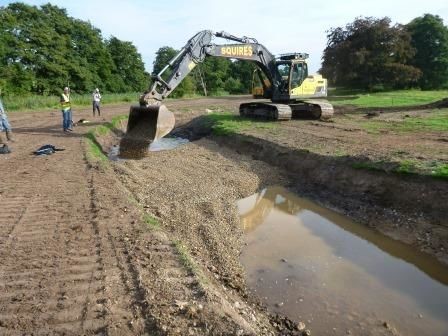
Gravel riffles being created within a new channel creation, along the River Glaven at Bayfield Hall, by the Wild Trout Trust, in 2014.
These variations in rates of flow created in pool riffle sequences also sort the channel bed material, with larger, coarser particles being deposited in riffles and finer material in pools. The finer particles are carried by the faster flow in riffles and deposited in pools when the rate of flow decreases. This sorting takes place most effectively in lower flows, when the difference in flow rates between pools and riffles is greatest.
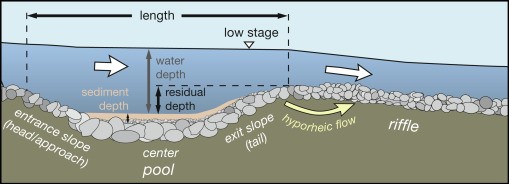
Pool and riffle features and dimensions.
Introducing gravel into the river is so important because it creates immediate habitat for in-channel species, especially fish species that require a clean, abundant gravel supply to create spawning redds.

Two Sea Trout, the female at the forefront, on her side, cutting a redd.
Redds are nests where fish bury their eggs, created by displacing gravel as they release their eggs, which results in the eggs being buried in the pile of gravel.
Previous Restoration Projects
The effect of introducing gravel to restore a river is shown in a project conducted by the Environment Agency and National Trust along the River Witham at Belton House.
This project raised the river bed and created riffles by introducing approximately 700 tonnes of mixed gravel. Large stone cobbles were then introduced on top of the new riffles to provide refuge and spawning habitat for important in channel species such as white clawed crayfish and brown trout.
As well as introducing gravels, this project involved the lowering of the river bank, reconnecting the river to its floodplain, and installing faggot-fronted berms to narrow the channel. Resulting in a more natural river habitat with a reconnected floodplain and more in-channel variation to benefit local species.
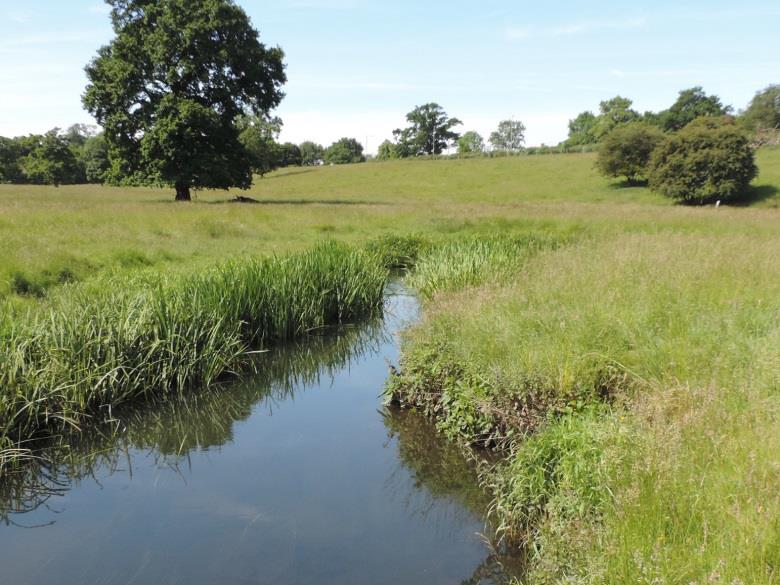
Before the works, showing a slow flowing channel with steep, disconnected banks.
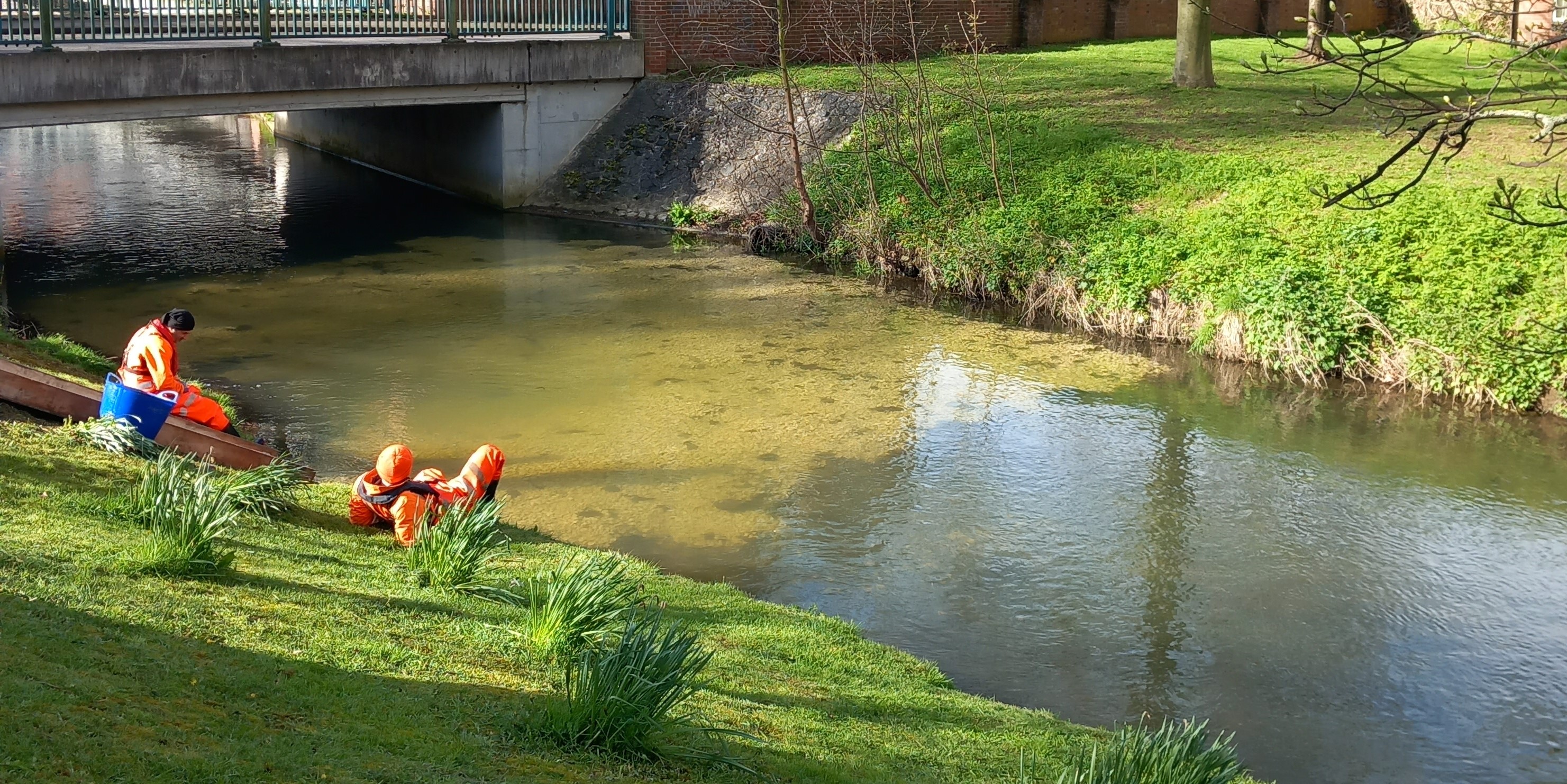
High quality gravel was installed along the entire riverbed of a section of the River Witham as part of the Stonebridge Close project. Within just a few weeks spawning had taken place and we received reports of increased numbers of fish.
1234567890
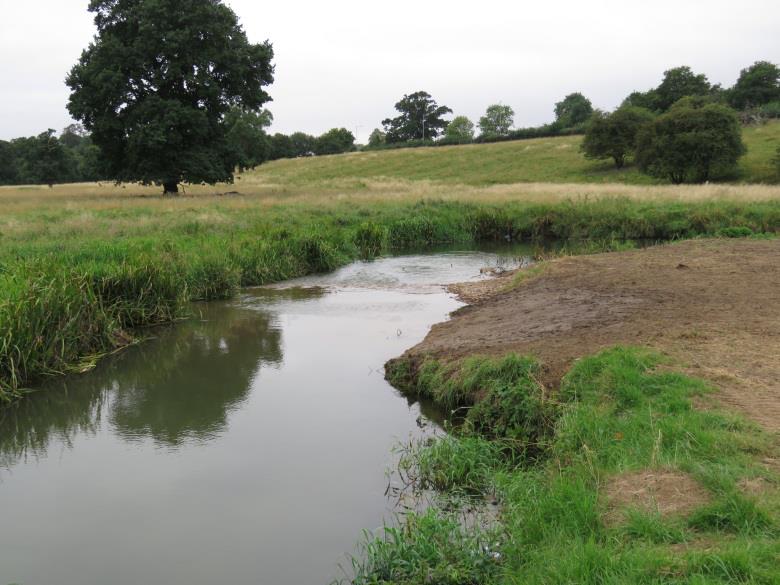
After the creation of a gravel riffle and bank reprofile, speeding up the flow and reconnecting the river with its floodplain.






